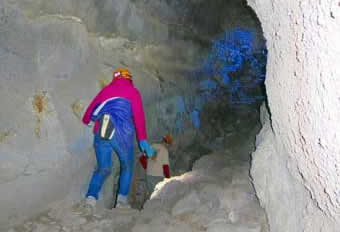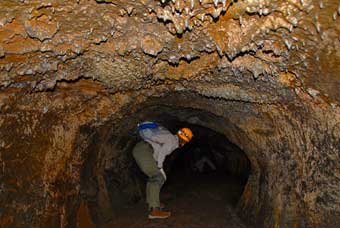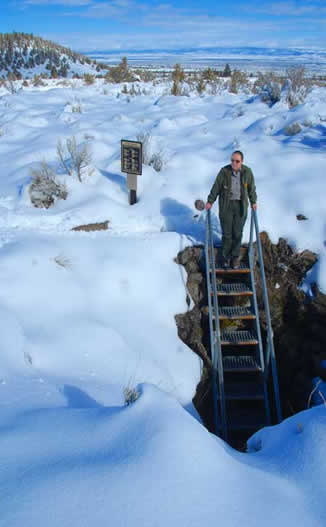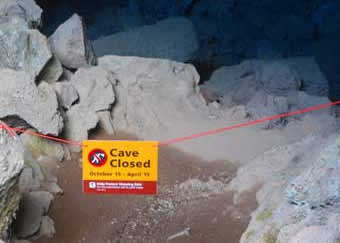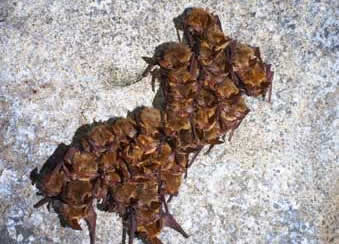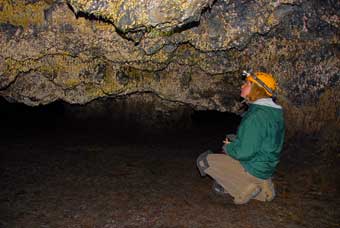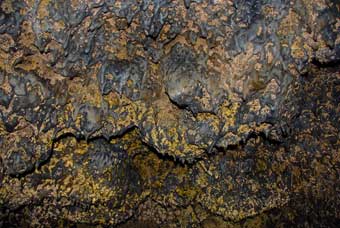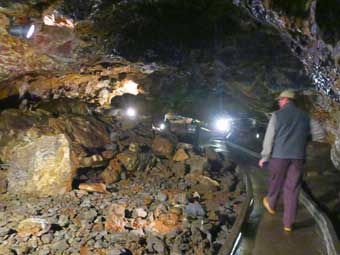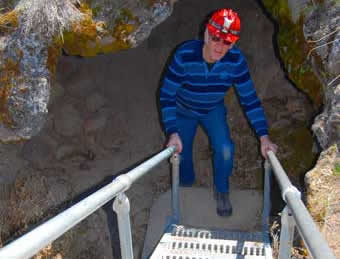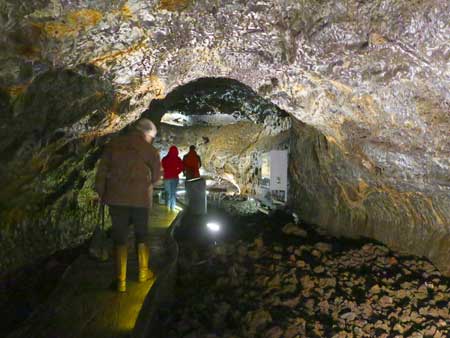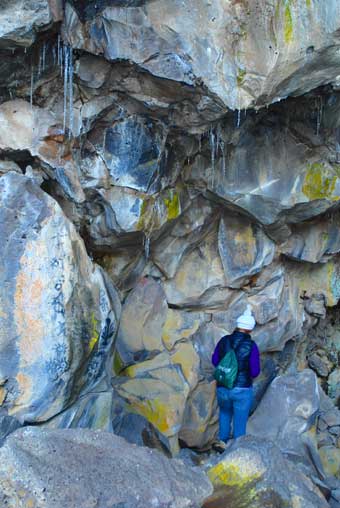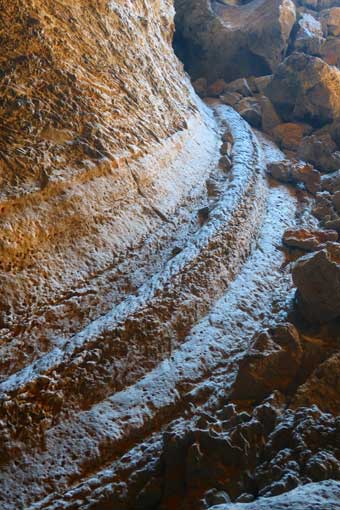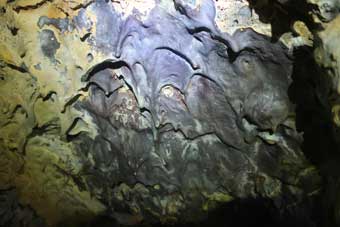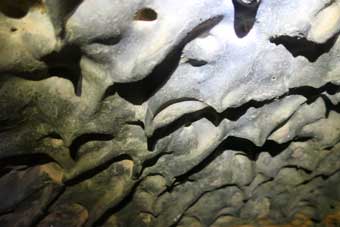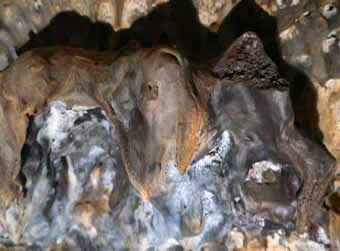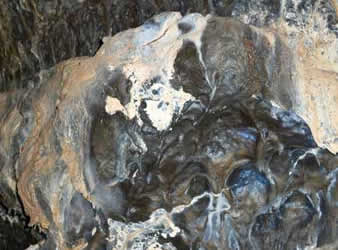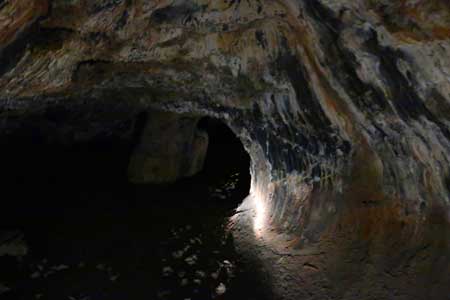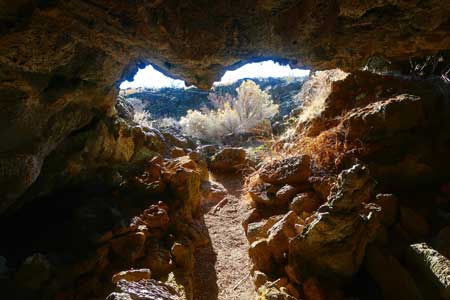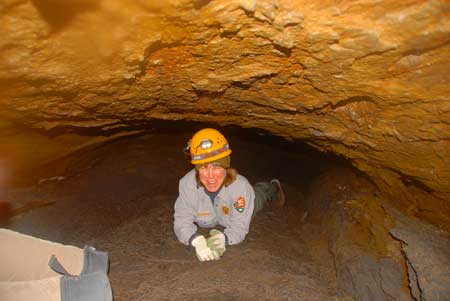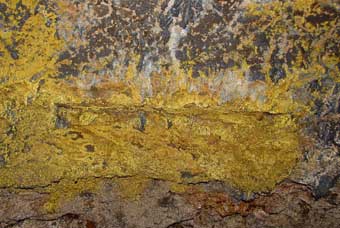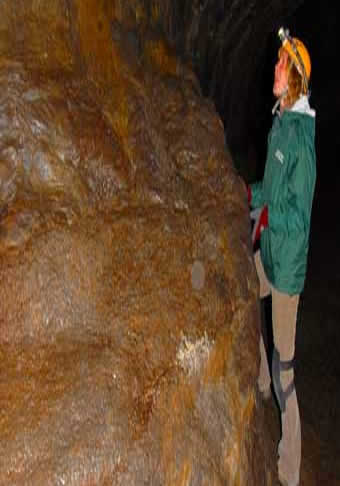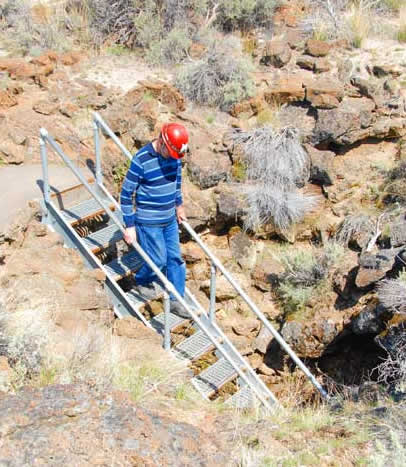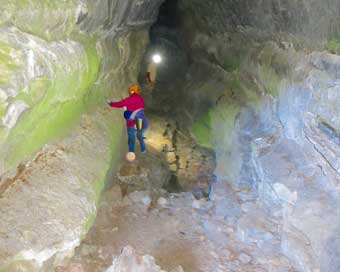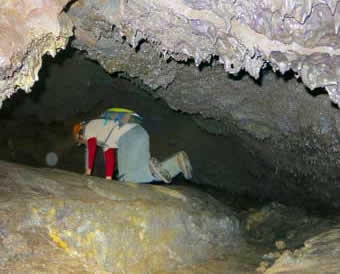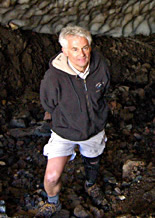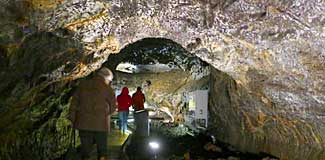 |
|
CAVING IN DURING THE WINTER: Exploring Lava Tube Caves at Lava Beds National Monument |
|||
Story and photos by Lee Juillerat and as attributed |
|||
What do you do and where can you go when it’s bone-chilling cold outside? Cave in to those desires to get out and go by heading to Lava Beds National Monument and explore some of the park’s more than 700 fascinating lava tube caves. Located in far Northern California near the Oregon border, it takes some effort to get to the park, but it’s worth it.
This time of year, when it can be bitterly cold or even snowy outside, inside the caves it’s comfortably mild, with temperatures averaging 55 degrees Fahrenheit year-round, so some warm clothing is necessary. But the lava tubes are magical anytime of the year – a hodge-podge maze of unpredictable shapes and forms of weirdly displaced lava in otherworldly outbursts of dripstone, ribbed walls, stalactites and remnants of frozen-in-place lava flows.
During a several-hour winter outing, I walked, stooped and wriggled through the caves, focusing on those along Cave Loop Road. With the exception of Mushpot Cave, none of the park’s lava tubes are lighted so it’s necessary to go prepared. Necessities include sturdy boots, long pants and, most of all, good lights. Helmets, knee pads and gloves make squeezing through areas with low ceilings easier. Because of concerns about white-nose syndrome, a disease that is killing bats at cave areas throughout the nation, all visitors are required to get screened and obtain cave permits at the park’s visitor center. Flashlights can be borrowed at no charge – they must be returned – but it’s recommended that people carry two light sources. Many cavers prefer headlamps that fit snuggly on helmets.
Some caves are seasonally closed to protect maternal bat colonies where mothers raise thousands of tiny bat pups on cave ceilings. As of this particular January, closed caves include Hercules Leg, Juniper, Labyrinth, Lava Brook Sentinel, and Sunshine. Closures change every few months so always get updates at the visitor center or online.
Even with the seasonal closures there’s no shortage of lava tubes to explore and enjoy, especially along Cave Loop Road. Rated as least challenging to explore are Upper and Lower Sentinel, which has upper and lower entrances, along with Ovis and Paradise Alley. Rated as moderately challenging are Golden Dome, Blue Grotto and Sunshine while listed as more challenging are Labyrinth, Lava Brook, Hopkins Chocolate, Hercules Leg, Catacombs and Juniper.
For first-time park visitors, be aware that all the caves have irregular floor surfaces, narrow paths, and frequent low ceilings. An even bigger caution, except for Mushpot, they’re all dark. That’s part of the attraction. While some ranger-guided tours are seasonally offered, visiting the caves, especially when done solo or - even better - with friends, truly creates a sense of exploration. When not closed, a good starting cave is Sentinel. Like nearby Mushpot, Valentine, Skull, Merrill and Heppe, Sentinel generally has relatively high ceilings where it’s possible to walk upright on mostly smooth floors. The most challenging caves have low ceilings that require crawling over ragged surfaces of coarse aa lava* and under potentially head-poking lavacicles, which is why helmets, kneepads and gloves are recommended. Although Hercules Leg is rated most challenging, it’s worth exploring because a large section has a comfortably high ceiling, smooth floors and areas where outside light filters in. That’s also a feature of Sunshine where, as the name implies, two collapses help light the cave.
What make cave visits truly fascinating are their amazingly diverse features. Golden Dome, for example, is described by Charlie and Jo Larson, authors of the excellent guidebook, “Lava Beds Caves,” as being “characterized by cauliflower aa floors, cupolas, cutbanks, aprons, well-preserved lava flowstone, ribs and little collapse.” Golden Dome is also known for “headache rock,” a protrusion that’s rocked more than a few heads of people entering and exiting the cave via its steep steel access ladder. In describing Hopkins Chocolate, the Larsons explain that it was named partly for its discoverer, E.L. Hopkins, and partly because of its “tan-colored coating of minerals and mud on the ceiling and walls.”
Catacombs, with a total length of 6,903 feet, was named by J.D. “Judd” Howard, known as “The Father of Lava Beds,” who discovered the cave in March 1918. According to “Lava Beds Caves,” Howard was seeking shelter from a blizzard when he descended into a collapse.” While seated on a wood rat’s nest he “felt air movement and tore away the nest to uncover a small opening through the rocks.” As he explored the cave, its many branches and alcoves “reminded him of burial chambers beneath the city of Rome that he had read about.” Nearly two dozen features are named, including the Wine Cask, Igloo, Boxing Glove Chamber, Howards Hole and Devils Backbone. Howard, who moved to the Klamath Basin to work in flour mills in 1916, spent 20 years exploring caves. Along with discovering and naming caves, Howard cleared entrances to make many of the caves more easily accessible.
Other cave improvements were done by work crews, including the Civilian Conservation Corps (CCCs). In the 1930s and ‘40s, crews cleared passages, built bridges and ladders, and enlarged select cave entrances. Over the years the park has installed a network of steel bridges, such as in Sentinel, which connect the upper and lower sections. On any day, but especially on February 14, worth a visit is Valentine Cave. Only a short drive from the visitor center, Valentine is one of the park's most accessible and popular lava tube caves. It features relatively high ceilings, wide passages along with several walk-around pillars, benches, pahoehoe floors, lava pools, and fascinating lavacicle and dripstone ceilings and walls.
It’s named Valentine because it was discovered on Valentine’s Day in 1933 by Ross Musselman, a CCC crew member. He saw the cave “breathing” steam during an unusually cool morning when the temperature was 12 degrees Fahrenheit below zero. In a 1961 interview taped by park rangers in 1961, Musselman said he and other CCC workers had seen steam rising from the juniper-sagebrush lands on February 12. The following day, their foreman told crew members that if the steam re-appeared they should grab lanterns and other gear and head off to try to find the source. The next morning, Valentine's Day, Musselman saw the steam and, "I immediately took a lantern and ran the distance from Indian Well Cave." He said the cave entrance, which was later significantly enlarged, was then small and obscure. "There was a very small opening. The breakdown had almost closed the opening the full width. What little opening there was, there was a juniper tree growing in it," he remembered. "As I went down into the cave I was amazed, and I can't help but say that I was really happy ... It was the most beautiful thing I ever saw."
Visitors have echoed similar sentiments ever since. A geologist’s report, for example, notes the floor near the cave’s entrance features ropy pahoehoe that in places is black, glass and lustrous. Nearby, cascades of the pahoehoe are frothy with bubbles. There are also "bathtub" ring marks, lava pools, lava cascades and short, wide-bladed lavacicles known, fittingly, as shark's teeth along the cave's 1,600 feet of accessible passages. In places where rainwater drips through the roof, "these phosphatic materials glow with a greenish phosphorescence when a light is played upon them." Lights are essential to appreciate the shapes and colors of gold-colored sulfur deposits, cauliflower shaped corals and chocolate-hued walls. Despite his discovery, Musselman isn't honored as the "Father of Valentine Cave." He had his chance but didn't take advantage of the opportunity, something he later regretted. As he explained during the 1961 interview, "I was asked to name the cave, and at the time my brother workers and the supervisors advised me to attach my name to the cave. At that time I didn't think I would be interested in any notoriety.” The cave’s name hasn’t changed. That’s why every day is Valentine’s Day at Valentine’s Cave. Valentine is just one of the caves worth exploring. And it’s just one of the many reasons to visit Lava Beds National Monument any day of the year.
For detailed information on Lava Beds National Monument, including its location, visit the park website at https://www.nps.gov/labe/index.htm, visit the Facebook site or call 530-667-8113. About the Author
|
